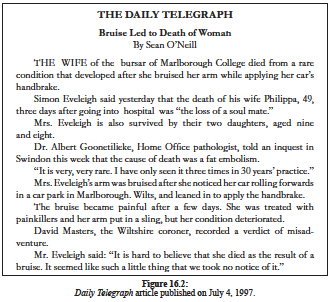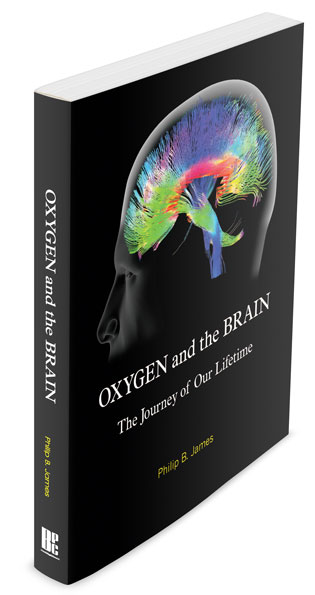Death from bone marrow and fat embolism is rare and, obviously, after minor trauma exceedingly rare, although there will undoubtedly be many cases that have not been published and many others that will have gone unrecognised. Deep venous thrombosis and pulmonary embolism after aircraft flights were thought to be rare but, with publicity, emergency departments close to major airports reported that they have seen such patients regularly over many years. This is known as the finder effect. Nevertheless, the odds against death from minor trauma are, of course, extremely large. The examination of many millions, or even billions, of cases of minor injury would in all likelihood not find a single death from such a cause and so such a mechanism may be readily discounted by those who argue from epidemiological and statistical data . . . In fact, it is the only argument open to those who discount a link between trauma and the development of multiple areas of sclerosis.
However, the cause of the lady’s death following the forearm bruising covered by the Daily Telegraph was established beyond question, simply because droplets of fat were present in the lungs and in other organs, including the brain, at post-mortem examination.

As the level of trauma increases, so does the likelihood of fat embolism. Fat embolism can also provide a solution to a puzzling feature of multiple sclerosis; it affects twice as many women as men and women generally have twice the body fat content of men. Each feature of fat embolism is subject to a normal or Gaussian distribution, from the release of fat into the circulation, to trapping in the lungs, to finally sustaining damage in the nervous system. In other words, some people will be more likely to have such an event, others very unlikely, with most of us having an intermediate risk.
(Reference: James, P.B. Oxygen and the Brain: The Journey of Our Lifetime. North Palm Beach: Best Publishing Company; 2014.)
 |
Disclaimer: The opinions expressed in this work are those of the author(s) and do not reflect the opinions of Best Publishing Company or its Editors. Information contained in this work has been obtained by Best Publishing Company from sources believed to be reliable. However, neither Best Publishing Company nor its authors guarantees the accuracy or completeness of any information published herein and neither Best Publishing Company nor its authors shall be responsible for any errors, omissions, or claims for damages, including exemplary damages, arising out of use, inability to use, or with regard to the accuracy or sufficiency of the information contained in this publication. No responsibility is assumed by the Publisher or Editors for any injury and/or damage to persons or property as a matter of product liability, negligence, or otherwise, or from any use or operation of any methods, product, instructions, or ideas contained in the material herein. No suggested test or procedure should be carried out unless, in the reader’s judgment, its risk is justified. Because of rapid advances in the medical sciences, we recommend that the independent verification of diagnoses and drug dosages should be made. Information in this publication is current as of the date of the printing. All rights reserved. No part of this work may be reproduced, stored in a retrieval system, or transmitted in any form or by any means, electronic, mechanical, photocopying, recording, or otherwise, without written permission from the publisher.